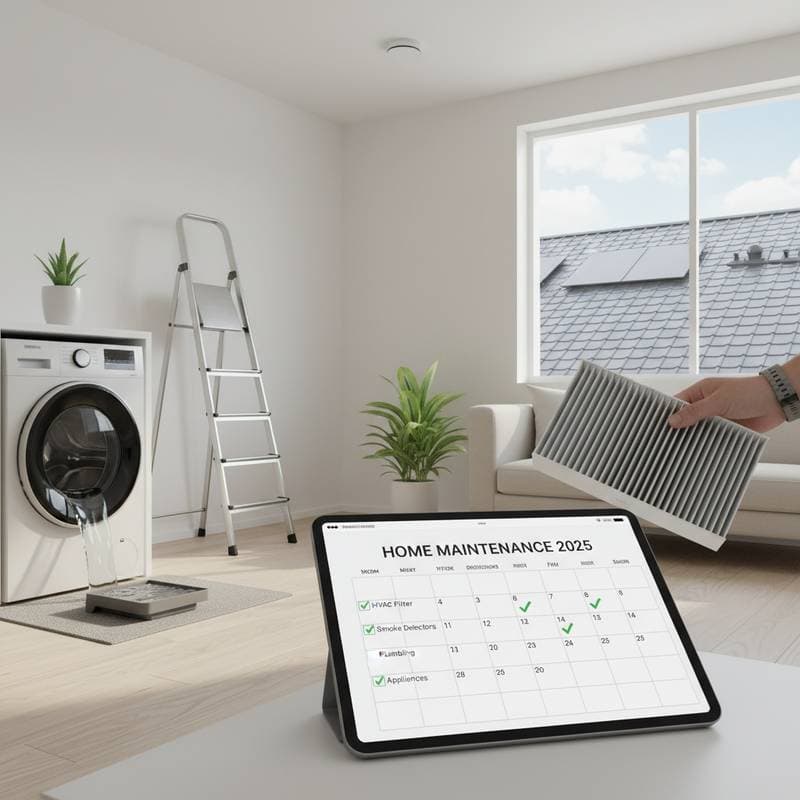Summer AC Prep: Essential Maintenance Checklist
When the heat starts to build, your air conditioner becomes one of the most relied-on systems in your home. Regular maintenance keeps it running quietly, efficiently, and safely. By following a clear checklist, you can lower energy use, reduce repair costs, and enjoy steady cooling all season.
This guide offers a full seasonal maintenance plan for homeowners. Each step focuses on performance, energy savings, and safety. The list covers both simple do-it-yourself checks and tasks best left to professionals.
Core Benefits of Pre-Summer AC Care
-
Improved energy efficiency
A clean, tuned system uses less power to reach target temperatures. -
Lower repair costs
Early detection of leaks or worn components prevents major damage. -
Better indoor comfort
Consistent temperature and humidity levels make living spaces more comfortable. -
Cleaner air
New filters and clean ducts reduce dust, pollen, and allergens. -
Longer equipment life
Regular maintenance helps motors, coils, and fans last longer under heavy use.
2. Clean the Condenser Unit
The outdoor condenser releases heat from your home. Dirt, leaves, and debris can block this process.
- Turn off power to the unit at the breaker.
- Remove leaves and grass from around the base.
- Use a soft brush or vacuum to clear light debris from fins.
- Keep shrubs trimmed at least two feet away from the unit.
Safety Tip: Never use high-pressure water. It can bend fins and damage components.
4. Test the Thermostat
A faulty thermostat can cause short cycling or uneven cooling.
- Set the system to “cool” mode and lower the temperature.
- Wait a few minutes to see if the outdoor unit starts.
- Replace batteries if readings seem inaccurate.
- Consider upgrading to a programmable or smart thermostat for better energy control.
Smart thermostats can cut cooling costs by adjusting temperatures automatically when no one is home.
6. Inspect Electrical Connections
Loose wires or corroded terminals can cause system failure or even electrical hazards.
- Turn off power before touching any components.
- Look for burnt marks or damaged insulation.
- Tighten visible screws carefully.
- Call a certified technician for major electrical repairs.
Experienced homeowners often note that tightening connections once a year prevents flickering lights when the AC starts.
8. Clean and Test the Blower Fan
The blower moves cooled air through ducts. Dust on fan blades or a weak motor reduces efficiency.
- Remove the front panel of the indoor unit.
- Use a soft brush to clean blades carefully.
- Make sure the fan spins freely without wobbling.
- Listen for squeaks or rattles that may suggest worn bearings.
If the fan motor makes loud humming sounds, request a professional inspection before it fails completely.
10. Schedule a Professional Tune-Up
While many tasks are safe for homeowners, some checks need licensed technicians. A full tune-up includes:
- Measuring refrigerant pressure
- Testing airflow and temperature splits
- Lubricating moving parts
- Verifying safety controls
- Calibrating the thermostat
Professional servicing each season ensures your system meets current efficiency standards and performs at its best.
Common Questions from Homeowners
How often should I replace my AC filter?
Every one to two months during heavy use. Homes with pets or allergy concerns may need monthly changes.
Can I clean coils myself?
Light cleaning is safe, but avoid deep scrubbing or chemicals. Hire a technician for a full cleaning if buildup is heavy.
What temperature should I set for best efficiency?
Most experts suggest keeping the thermostat around the mid-seventies when home and slightly higher when away.
How do I know if my AC is too old to repair?
If repair costs approach half the price of a new system or if it struggles despite regular maintenance, replacement may be more cost-effective.
Maintaining Your Investment
Consistent attention to your cooling system keeps your home comfortable and energy bills steady. A clean, tuned, and balanced system works quietly and lasts longer. Following this checklist each season builds a strong habit that pays off with fewer surprises and smoother performance.





